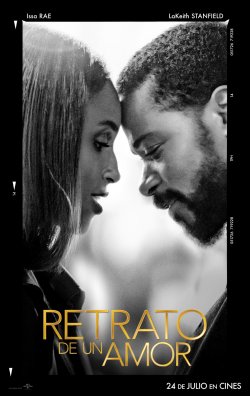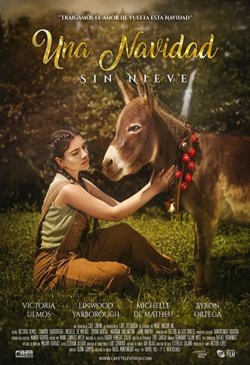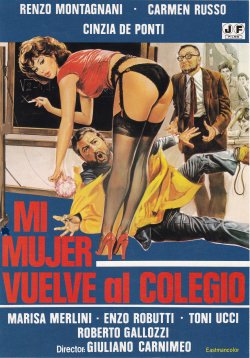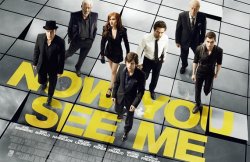 |
|
SINOPSIS
Grupo de historias de amor entrelazadas ambientadas en el pasado y en el presente...
INTÉRPRETES
LaKEITH STANFIELD, CHELSEA PERETTI, ISSA RAE, KINGSLEY BEN-ADIR, COURTNEY B. VANCE, LIL REL HOWERY, Y'LAN NOEL, TEYONAH PARRIS, KELVIN HARRISON JR., JASMINE CEPHAS JONES, ROB MORGAN, CHANTÉ ADAMS, JAMAAL BURCHER
MÁS INFORMACIÓN DE INTERÉS
![]() CRITICA
CRITICA
![]() SECUELAS Una ventana al cielo (1975)
SECUELAS Una ventana al cielo (1975)
 INFORMACIÓN EXCLUSIVA
INFORMACIÓN EXCLUSIVA
THE PHOTOGRAPH COMES TO LIFE...
While audiences have seen an abundance of romantic dramas throughout Hollywood history, only a tiny fraction have centered on Black characters, and that dearth of contemporary Black love stories hadn’t improved over the past two decades. Filmmaker Stella Meghie noted that, to her recollection, there hadn’t been any iconic, mainstream Black love stories for more than 15 years, when movies like Love & Basketball and Brown Sugar were made. Meghie, who has a passion for the romantic-film genre, decided it was time to fill that void. While brainstorming ideas, Meghie began to think about the impact that physical distance can have on the people we love, an idea that resonated within her own life and family.
“I started to explore what happens when a person continues to love someone over 30 years without being able to see them, but my inspiration wasn’t initially about romantic love,” Meghie says. “I was inspired by a story about my grandmother not seeing one of her daughters for almost four decades. It made me wonder what it was like for her to think about her daughter every single day but not be able to see her.”
Meghie went on to use that notion of distance to develop two multigenerational love stories for what would become The Photograph. She brought her idea to Will Packer and James Lopez—producers who she knew would celebrate the authenticity of the characters and who would honor the experiences that she wanted to portray. Her pitch was perfectly timed, because the producers had been looking to expand to genres of film they hadn’t yet pursued, and they saw The Photograph as a great opportunity to diversify their slate. “Like all great Hollywood collaborations, my collaboration with Stella began years ago,” Packer says. “I knew of her and I knew that she had a project that was close and personal to her. Independent of her, I was looking for a rich love story around African-Americans that had themes and dynamics that we’ve seen in cinema, but that we don’t always see on screen with Black people. I thought it would be really interesting to do a Black love story in 2020, and she had the perfect one.”
Packer’s producing partner Lopez adds: “This story was appealing to Will and me because we haven’t seen a lot of dramatic romances made for African-American audiences in recent years. It was a very moving love story told in two different time periods, which we thought was interesting. When I joined Will Packer Productions, Will and I had a long discussion about expanding the brand. The Photograph is part of that expansion because we’ve never done a romance-drama before.”
Packer, Lopez and Meghie were also all in agreement that too much time had passed since audiences had seen a dramatic romance centered around Black characters. The filmmakers were eager to be at the forefront of bringing these types of films back to life, and they shared an affinity for a specific film that they looked to for inspiration. “What interested me about The Photograph was that we haven’t had a love story like this one, with actors like these in far too long,” Packer says. “It made me think back to one of my favorite movies, Love Jones, which is a story that stuck with me because it was such an authentic and true depiction of Black love. I was interested in helping Stella to similarly tell a story of love between Black people today.”
Meghie adds: “Love Jones showed an adult, very sexy, intellectual, sophisticated kind of love,” Meghie says. “That movie shaped me a lot. I’ve watched it at least every six months from the time it came out until today. I can quote every single line.”
Packer has a personal theory on why it has taken so long to get another Black love story to the screen. “I’d like to think it was about waiting for this team to come together to make it happen,” Packer says. “We basically handed it over to Stella and said, ‘Tell your story. Tell the story that’s important to you, because if you tell it and you tell it authentically, it’s going to resonate with audiences in the same way that we’ve seen other stories resonate with audiences.’”
Meghie began her journey of writing the film by reflecting on her relationships with her mother and grandmother and the way that those relationships have shaped who she is today. “I grew up very close to my grandmother and my mother,” Meghie says. “My grandmother was a huge part of my life. I’m always thinking about things from a generational perspective and about how we grow through each generation, so I was glad to bring that element into this film, too.”
When Meghie reached young adulthood, she began to realize how much a person’s history affects how they walk through their daily lives, which is something she now consistently explores in her writing. “I don’t think it was until I was in my 20s that I realized that my mother had gone through some of the same things that I had, relationship wise,” Meghie says. “It didn’t dawn on me until a certain age and at that point, I started to give her a break. It was the first time I really empathized with her about those experiences from her past.”
Meghie went on to develop a story that shone a light on the experience of falling in love from two parallel women’s perspectives, which Packer championed. “I’m no stranger to telling stories with women at the center,” Packer says. “There’s been such a dearth throughout cinematic history of stories with Black women at the center of them being their real, authentic, flawed and ambitious selves. I pay close attention to my audiences, and they say, ‘just show us, as us.’ They just want to be shown as real, rounded characters, and you see that in this movie with two female characters who are genuine, flawed and complex, and to me, that makes for the best type of storytelling.”
Because the story was so close to her, Meghie felt a special connection to the project that she carried with her throughout production. “It’s much different to direct something that I’ve written versus something that someone else has written,” Meghie says. “When I wrote this, I thought about how I would direct it, so I was intrinsically more attached to the material. I had a clear vision about what I wanted to see and how I wanted to shoot it.”
Another element that the filmmakers explored for the characters was their socioeconomic backgrounds. It was important to them to not only break the glass ceiling on making a current Black love story, but also to portray the characters in a different way than audiences have become accustomed to seeing. “Oftentimes, films like this only portray singular demographics, but The Photograph sets its characters in very different economic backgrounds,” Meghie says. “I deliberately made Mae and Michael’s characters in the film upper-middle class because I think it’s important that audiences see all walks of life for African-American people. Mae’s mother, however, grew up with a much lower economic background. It’s time that we get to a point where we make films that everyone can find themselves in.”
Packer adds: “It was crucial to us that the characters’ careers weren’t ones that we see all the time in movies. We decided on careers that we don’t often see African-Americans portray on screen. I’m looking forward to the day when we’re not having conversations about careers that we haven’t seen Black actors play, but we’re not at that point yet, so we thought it was important that the occupations of our characters were a little bit different than what our audiences may have seen before.”
Ahead of all else, however, the filmmakers want audiences to recognize that, while this is a story about Black love, it applies to a wide array of people. The ideas and emotions are universal. Ultimately, The Photograph is a story about complex people who must overcome things, both internally and externally, to realize their potential to love. “I think everyone who sees this film will be able to relate to moments within the narrative,” Lopez says. “Whether it’s a complicated family situation, the end of a relationship or the start of one, The Photograph addresses pivotal and inevitable parts of human life.”
Packer adds: “This is a Black love story because it’s about Black people and it has themes that are certainly specific to Black culture. Stella did an excellent job of making sure that it felt authentic and organic to the Black experience. At the end of the day, though, it’s a universal love story that just happens to be told through this specific lens. I think whether or not you look like the characters on screen, you can find an area of relatability within this story. When you think about some of the best stories, they’re not about specific attributes, cultures or demographics. The best stories are usually universal stories that show a specific point of view. And this story is no exception.”
THE CHARACTERS...
The Photograph brings together an ensemble of gifted actors whose skill and depth are in a class by themselves. “This was, without a doubt, one of the best casts I’ve ever worked with,” Will Packer says. “I was really impressed with the way that Stella was able to weave together all of these different characters. It’s clearly a love story between our leads, but everyone else has a very important and clear point of view.”
Stella Meghie took a unique approach in developing her directing techniques by catering to the specificities of each actor. “I always try to find connections with the actors in my projects,” Meghie says. “I love meeting with actors and trying to understand their energies and the nuances to their personalities, and, in turn, finding different communication styles that work for each person. I was lucky to end up with the dream cast for The Photograph.”
Issa Rae - Mae Morton
Mae Morton, who serves as the film’s narrative anchor, is a woman who unravels a mystery about her mother, and in the process, learns about herself. Meghie, Packer and Lopez had all worked with Issa Rae before—Meghie directed an episode of Rae’s HBO series Insecure, and Packer and Lopez had produced last year’s film Little, which Rae starred in—and knew she would be the perfect person to gracefully convey Mae’s journey to discover love, and herself. “Issa is the most natural kind of actress,” Packer says. “You know you’re going to get what’s intended on the page from any character she plays. When we started talking about casting this film, Issa immediately seemed like the perfect person to play Mae because she can show strength, but at the same time, show insecurity. Once you become invested in a character she plays, the decisions that the character makes start to matter. That’s what Issa does so well. She makes you care.”
While this film is Rae’s first starring role in a romantic drama, Meghie was confident that she would capture Mae’s wit and independence, as well as the emotional wounds that are preventing Mae from finding true happiness. “I love unexpected casting,” Meghie says. “After working with Issa on Insecure, I learned that her acting abilities have such versatility and she has so much room to stretch. I thought this would be an unexpected role for her but something that I could see her seamlessly bringing to life. I knew she would make Mae someone to root for.”
Rae was interested in not only exploring a character with quite different personality traits than her own, but she was excited to tackle the drama genre for the first time. “I was drawn to the character of Mae because she seemed very unlike me,” Rae says. “It felt like she was so much further along in the confidence course than I was. It was appealing to me to play someone who comes off so put-together despite the circumstances of losing her mother. This was the first time I’ve taken on a role like this. I’m accustomed to doing comedies, and of course, there are bits of humor in this film, too, but not having the comedy guiding me was a new and interesting challenge for me.”
As soon as Rae signed on for the film, she delved into the psyche of Mae in detail, not only looking at her specific disposition, but also at her career as an art curator and what that might mean for the character. “I thought about how she would walk, how she would look at people, how she would view the world,” Rae says. “After answering those questions, I did a deep script study. I approach every script as a writer first, then as a performer. It was about finding the intricacies about Mae—not only when she speaks, but when people speak to her. I tried to figure out what her journey would be and where she would end up.”
While Rae wrote the episode of Insecure that Meghie directed, the writing roles were reversed for The Photograph. “I change my methods when I act in something I’ve written versus something someone else has written,” Rae says. “When I haven’t written it, I ask a lot of questions. It was refreshing to work with Stella who both wrote and directed, because I was able to ask deep questions like, ‘Well, what did you mean? What was your intention in this scene?’ To be able to talk to the person who both wrote the words and executed the vision was a huge help. Stella was also very collaborative and genuinely wanted our insight about our characters. If there was ever a time when I felt like a line wasn’t right, I felt comfortable telling her, and she would respond with, ‘Okay, what would you say?’ I can’t overstate how much I appreciated having my voice heard on set.”
Meghie was likeminded in the collaborative process between her and Rae. “I was so grateful to have a producer, writer and altogether boss onset in Issa,” Meghie says. “We were able to get things done efficiently and it was great to have her there to lean on and work together with to make things better on the spot.”
Like her fellow filmmakers, Rae looked back at the films that celebrated Black love when preparing for the film. “I happily drew on the history of Black romance films from the past because I miss them,” Rae says. “I referenced them in the back of my mind, but I also understood that in a new age, we were shepherding a more modern take on classics. My hope is that this movie isn’t the last of its kind again for 20 or 30 years. I’m proud and inspired to be part of a film that celebrates Black love and I hope it inspires others to get on the Black love train, too.”
LaKeith Stanfield - Michael Block
Michael Block, a smart and enthusiastic journalist, is portrayed by LaKeith Stanfield. While Stanfield has made a name for himself as one of the most uniquely talented actors of today in films like Sorry to Bother You and Uncut Gems, this was his first time starring in a dramatic romance. “What resonated with me about this story was the idea of discovery,” Stanfield says. “The discovery of one’s path in life and the discovery of the way in which love affects us differently. I connected with the character of Michael through his ambition, which is something I really value. I also made a connection to the character through realizing his struggle for love and through his sense of family values.”
Mae and Michael meet because Michael is working on a magazine story that involves her mother’s past. Stanfield brought an edge of mystery to Michael, which proved perfect for the role. “LaKeith played Michael in a brooding way,” Packer says. “He makes it feel like there’s more to learn about the character, but not to the point that he’s inaccessible. He makes you want to unlock something in Michael. LaKeith is extremely talented and with this role, he was able to go in and play with hidden layers that you don’t necessarily see on the surface of Michael.”
When Meghie thought about casting the character of Michael, she thought of Stanfield and knew that he would represent the character as she had imagined him. When he read for the role the first time, Meghie knew she was right. “LaKeith flew into Louisiana and he read with Issa and as soon as he started reading the part, I was smiling from ear to ear,” Meghie says. “I immediately knew there was no better person to play Michael than LaKeith. He is incredibly soulful, sensitive and thoughtful as an actor. The role of Michael could have come off as somewhat of a player, if depicted by the wrong person, but LaKeith brought so many layers and such complexity and honesty to the character.”
And while we see Michael learn to love through the evolution of his relationship with Mae, their budding romance helps Mae do the same. “Mae isn’t looking for love when we meet her in this story,” Rae says. “She’s trying to focus on herself, but she meets Michael, who’s a charming, earnest and honest person. Through meeting Michael, she learns to navigate those feelings that she had previously pushed aside.”
Stanfield and Rae were acquainted—they had previously worked together on Jay-Z’s “Moonlight” music video in 2017—but didn’t know each other well, and the shooting schedule required them to jump into filming together soon after they arrived to set. The friendship that developed between them offscreen paralleled the romance that developed between their characters on screen. “LaKeith and I didn’t have a lot of time to rehearse or explore the chemistry of the characters before we began shooting, but he’s such a funny, admirable and genuine person that it really just worked between us right off the bat,” Rae says. “As the characters in the story got to know each other, LaKeith and I got to know each other at the same time.”
Stanfield was thrilled to be working with a writer-director on material that felt true and that explored elements of the interior lives of Black people, something seldom seen on film screens. “Stella was a great collaborator and allowed us to have our own viewpoints about the characters,” Stanfield says. “She has a great eye for directing, and it’s not very often that you have a director who also wrote the piece, so she was very intimate with it, which I appreciated. I’m happy to see that content is being created by Black people, that involve Black people, because there’s a certain authenticity to that. Once we’re able to tell our own stories, I think people will begin to see that, in fact, we’re all just human.”
Chanté Adams - Young Christina Eames
The central arc of The Photograph hinges on Mae discovering, through an old photo, who her mother, Christina Eames, really was, and learning to love through the lessons of Christina’s life. At the beginning of the film, Christina, a renowned photographer, has died. Mae, who was estranged from her mother at the time of her death, knew her only as this strong, successful, but emotionally inaccessible presence. As Mae begins to explore her mother’s past, the audience begins to learn about Christina as her own daughter does.
The audience is first introduced to young Christina, a motivated aspiring photographer from Louisiana, in a flashback to 1988. The character is portrayed by Chanté Adams of Amazon’s A League of Their Own. “Christina is driven by strength, ambition and passion to leave her home in Louisiana to pursue her dream of becoming a photographer,” Adams says. “She craves a better life that is bigger than what she’s used to. A place where people know her name and can admire her hard work. Her photos are important to her because she uses them to study the essence of humanity.”
Adams found it easy to connect to the character’s life-changing decision to move away from her hometown to pursue her career. “I’m from Detroit, where not a lot of people have the opportunity to leave and go after their dreams,” Adams says. “It was a big decision for me to leave and pursue my career away from my home and my family, so I could definitely relate to Christina in that way.”
Adams portrays the younger version of Christina that Mae never truly got to know—a woman who, like her daughter, experiences complications in life and relationships. Christina represents the fact that in order to reach your goals, sometimes you must sacrifice parts of your life. Adams appreciated Meghie’s openness and honesty about the characters and about her expectations in her direction. “Stella is such an actors’ director,” Adams says. “She was focused on catering to the needs of the characters and making sure that we felt comfortable with the language and the text, which is what truly captured the spirit of the community. She was also always open to collaboration.”
Adams was on Meghie’s radar to play Christina because Meghie was familiar with her work, and once she saw her audition, her decision was made easy. “Chanté sent in a tape for her audition and I was immediately like, ‘Okay, that’s it,’” Meghie says. “She was the only person who really showed a duality of the drive to go after her dreams, the courage to move and fight for what she wanted but also a real softness and vulnerability that I envisioned for Christina.”
Y’lan Noel - Young Isaac Jefferson
Isaac Jefferson, the kind and gentle love interest of young Christina Eames, is portrayed by Y’lan Noel, who previously worked with Meghie on The Weekend. “Y’lan is the whole package,” Meghie says. “He’s very handsome, but he also brings a sensitivity and complexity to the characters that he plays. I had a feeling that he and Chanté Adams would work great together, and they really did.”
Christina is the love of Isaac’s life, but they have different goals for the future. While Christina seeks a more fast-paced life in New York, Isaac is happy with a more quiet, humble life at home in Louisiana. “Isaac is a simple man who wants to live a simple life,” Noel says. “His love for Christina and his work are the two things he’s sure about. I, too, try to live a simple life and like to hold on to the few things I’m sure about.”
Noel appreciated Meghie’s direction in communicating the specificities that she envisioned in the character. “Stella knew exactly what she wanted,” Noel says. “That type of clarity brings out an ease in an actor.”
Rob Morgan - Isaac Jefferson
The present-day version of Isaac Jefferson is quite similar to the younger version of Isaac Jefferson—modest, thoughtful and easygoing. He’s being interviewed by Michael Block for a magazine story, which leads him into reflecting on his past relationship with Christina Eames. While he’s been content with his simple life, he’s always felt like something has been missing since Christina moved to New York. The role is played by Mudbound’s Rob Morgan, who effortlessly brought life to Isaac’s evolved persona. “Rob is one of the best actors I’ve ever worked with,” Meghie says. “I purposely wrote his scenes sparsely because he just doesn’t need much in order to convey emotions. He can explain so much with just the look in his eye. He’s such a gifted actor, there aren’t many people like him.”
Lil Rel Howery & Teyonah Parris - Kyle & Asia Block
Michael’s brother and sister-in-law, Kyle and Asia, are a happy, well-off couple with two young children. The pair, portrayed by Lil Rel Howery and Teyonah Parris, serves as the emotional support system for Michael throughout the film. As it turns out, Howery had recently been hoping for a role in a romantic film. “I’m a big fan of romantic comedies and love stories and was actually telling my manager that I wanted to do something with romance in it when this project came along,” Howery says. “I thought it was a beautiful story and I couldn’t wait to talk to Stella about it right away. We had a FaceTime call and talked for around two and a half hours about the movie.”
Howery appreciated the fact that the couple represents a different socioeconomic class than is normally represented by Black couples on screen. “Kyle is a successful Black man who loves his family,” Howery says. “First of all, his crib is amazing. When I saw that crib, I was like, ‘That brother’s got money.’ But he’s a great, gentle and supportive older brother to Michael. I’ve been an older brother my whole life, so it was easy to play a character who gives advice to his younger brother. I also love the Black love between Kyle and his wife, Asia. You don’t often see Black, successful couples on screen. It’s cool that we’re not only having the conversation about Black love but showing the realness of it.”
The scenes with Howery and Parris were some of Meghie’s favorite to shoot. One scene that she particularly loved involved Kyle, Asia, Michael and Mae sitting in the living room during a storm while Kyle and Asia tell an embarrassing story about Michael at their wedding. “I was in the process of rewriting that scene when I realized, ‘Why would I rewrite this? Lil Rel’s coming.’ So, I called him up and asked if he would be okay ad-libbing the scene, and he and Teyonah ended up coming up with the entire story about their wedding on the spot. We just let the camera run for like six minutes. The two of them just had such great chemistry.”
Courtney B. Vance - Louis Morton
For the role of Mae’s father, Louis, Meghie reached out to veteran actor Courtney B. Vance, who quickly agreed to sign on. “I fell in love with the layered aspect of the story, the journey back and forth through time throughout the storyline and the surprise outcomes for each of the characters,” Vance says. “Finding out that Issa Rae was going to play my daughter was the icing on the cake. That sealed the deal for me.”
It helped that Vance also felt a familiarity to the collectedness of Louis. “Louis reminded me a lot of myself in that he’s a steady, even-keeled kind of guy,” Vance says. “I found myself easily relating to his calmness. His relationship with his daughter Mae was a fractured one that conflicted greatly with his calm nature.”
It was clear to Vance that Meghie had a specific vision for the film and a grasp on the subject matter, which he greatly admired. “Though we haven’t had many films that explore this genre of a Black love story deeply, Stella knew and understood the genre implicitly and was able to tell our stories without letting the characters turn into caricatures,” Vance says. “The Photograph is a densely layered story that needed a deft hand that could handle the twists and turns and jumps back and forth in time. Stella handled it masterfully.”
LIGHT AND COLOR IN THE PHOTOGRAPH...
It was important to Stella Meghie that the film look and feel classic and saturated. She wanted to mix the story and aesthetic in a way that felt authentic and that would move the audience. This was something she discussed a great deal with director of photography Mark Schwartzbard. “Rather than describing a specific look that she wanted, Stella always described the effect she wanted to have on the audience,” Schwartzbard says. “She was concerned, in every scene, with what the audience was meant to feel. We set out to create a sexy, sophisticated world, and that was a collaboration between the locations, the production design, the hair, makeup and wardrobe, and then finally the camera and lighting. Stella stayed on top of every department to make sure every element felt right.”
Schwartzbard also had to consider the fact that there are two different eras and stories depicted in the film, and he used specific lenses to capture the essence of those differences. “We shot with spherical lenses for the present and anamorphic lenses for the past,” Schwartzbard says. “Anamorphic lenses are designed to compress a widescreen image to fit a square piece of film, so they have to squeeze the image to fit it all in. That squeezing leads to a whole lot of optical and geometric artifacts that end up giving off a romantic mood. Panavision was able to supply us with a very in-demand set of old C series anamorphic lenses, which have a whole lot of that classic anamorphic character, which helped give a little romance to our flashback scenes while the contemporary scenes looked cleaner. Of course, we ended up cheating a little bit, and using the anamorphic lenses here and there when we had reason to want that romantic look in the present day.”
As for his camera and lighting choices, Schwartzbard went for those that would best stay in line with the aesthetics that he and Meghie were going for. “We shot on the Arri Alexa Mini, which is a very non-controversial choice—it always works and everyone always looks good,” Schwartzbard says. “Our colorist, MITCH PAULSON, worked out a fantastic film emulation look for us. As far as lighting, we used a bit of everything, but my go-to lights indoors these days tend to be LEDs—Arri Skypanels, usually in backlights, and Quasar Science LED tubes, both their 4’ AC-powered tubes and their little battery-powered magnetic tubes.”
Another element that Schwartzbard dealt with was the fact that much of the film takes place during a hurricane. “There’s a hurricane at the center of the story, and although our characters are safe indoors, we wanted to feel the storm outside, so we looked for locations with lots of windows,” Schwartzbard says. “We needed to backlight the rain in order to see it, so we needed locations that were low enough to get the rain towers and the backlights above them. So, when we did small, romantic, intimate scenes of two people on a couch, outside the windows there were lifts all the way up and down the block with rain spiders, backlights and Ritter fans. The logistics for those scenes started to add up.”
LOCATIONS AND PRODUCTION DESIGN...
Past and Present. Tales of Two Cities
The two love stories of The Photograph take place across two different time periods and in two different locations, and it was important to director Stella Meghie that the film feel authentic, and that required shooting in the actual locations. “The story is told primarily in New York and Louisiana, so those are the places that became anchors for our story,” Will Packer says. “I knew that it was important for Stella to be able to actually shoot in New York and Louisiana, so, as a producer, part of my job was to make sure that we did that.”
Production designer Loren Weeks was tasked with designing present-day Louisiana and New York City, and both cities in the past, too. “Loren managed to build a progression of different worlds—from Louisiana bayous in the ʼ80s, to New York in the ʼ90s, to New York today and back to New Orleans today,” says director of photography Mark Schwartzbard. “Fortunately, his worlds were sufficiently realized so that I could work off what was there and build the lighting to match. But the main difference was in how sleek and contemporary our modern New York world is versus a rustic and homey Louisiana.”
Capturing the Essence of Love. The Photography of The Photograph
Photography is the key element that ties the two parallel love stories together in this film. The photographs in the film capture the essence and emotion of Christina and Isaac in their pasts and help connect Mae to that past in a way she wasn’t able to when her mother was alive. The photographs had been part of Stella Meghie’s idea for the film since her initial pitch. “A lot of the story is told through the photographs that Christina takes,” Packer says. “The photographs were always a device that Stella wanted to use for this project, which I liked. I liked the idea of a picture within a picture. It almost serves as another story and journey unfolding.”
One of Meghie’s inspirations for the character of Christina was artist Carrie Mae Weems—particularly her Kitchen Table Series. Meghie wanted original, authentic photographs taken for the character and she knew that she wanted the photography to come from an actual young Black woman photographer. As Meghie asked around to some of her friends in New York about young Black female photographers, multiple people suggested Meghie reach out to up-and-coming photographer JHEYDA McGARRELL. “It was very important to me for Christina’s photography in the movie to be real,” Meghie says. “Christina would have been in her early 20s when she shot the photographs, so I wanted to find a young, Black photographer in her early 20s to take the photos and to see them from behind her lens. When I asked around, Jheyda’s name came up a few times. She was doing her thesis at NYU at the time and I don’t think I even spoke to her before I asked her to do it. I just saw her photos and thought, ‘This is the girl.’”
McGarrell was astounded when the studio reached out to her about the project. Next thing she knew, she was on a plane on her way to start shooting in Louisiana. “The first time I met Stella, she told me that she was going to base the photographs off of Carrie Mae Weems, but that she’d asked friends for suggestions of young Black women photographers, and someone had named me,” McGarrell says. “After having done research, Stella said she thought I was perfect to shoot the photographs that she had been envisioning, which kind of switched it up and made it partly inspired by me, too. It was one of my happiest moments to date.”
McGarrell ended up taking the photographs of Chanté Adams as Christina in New York and of Y’lan Noel as Isaac in Louisiana that we see in the film. She also taught Adams small specifics about working with the camera that she could bring to the role of Christina. “I was in complete awe of Jheyda,” Adams says. “It was incredible to watch her in her element and to have her show me the ins and outs of photography.”
While McGarrell may have had a larger crew and a more controlled environment than when she shoots her own photographs, her inspirations behind the styles and textures of the photographs remained the same. “Stella gave me complete stylistic freedom and the subjects, and I just went in,” McGarrell says. “I am inspired by family photography, ID photos from every country, scrapbooks and basically every way that people of color have historically documented ourselves when we didn’t have the access to common self-representation.”
As for McGarrell’s camera of choice? “I always work with different cameras,” McGarrell says. “A point and shoot, a 35mm or a 120 camera. It doesn’t matter the brand to me or the film stock, most of the time. Whatever is accessible to me, I’ll shoot with it.”
THE MUSIC...
The warm, rich and sophisticated jazz music that fills the screen throughout the film was exactly what Stella Meghie had envisioned to accompany the film’s visual aesthetic. She couldn’t think of any better choice to capture that vision than Grammy Award-winner Robert Glasper. “I met Robert at one of his shows two years before we worked on this film and I told him that I wanted him to score the film,” Meghie says. “We had a great lunch and talked through the film and I told him what I was thinking about the music and we just really hit it off. He completely exceeded my expectations in the way he pulled the music into the story in such an emotional way.”
Will Packer agreed that the way Glasper weaved the story together with the music was brilliant. “One of Robert’s gifts is his ability to evoke emotion,” Packer says. “He makes you feel something when you combine his music with picture. You know, sometimes you can listen to something and you’re not quite sure how to feel. Not with Robert Glasper. His rich, soulful music not only tells you how to feel, but it informs you how to view some of the decisions that the characters make. He just gets the way that mood, music and cinema all interweave together and the fact that each one is very important.”
Packer continues: “The film takes place in two different time periods, two different cities and with very different energies and vibes, so the music had to be our great connector. It had to be the thing that pulls it all together and to interweave the story, just like the narrative. The songs became part of the narrative and helped to augment it. With a movie like this, one where you want to really feel something, music is essential.”
 GALERÍA DE FOTOS
GALERÍA DE FOTOS
https://www.cineymax.es/estrenos/fichas/119-t/126640-the-photograph-2020#sigProIde3d545f7df












